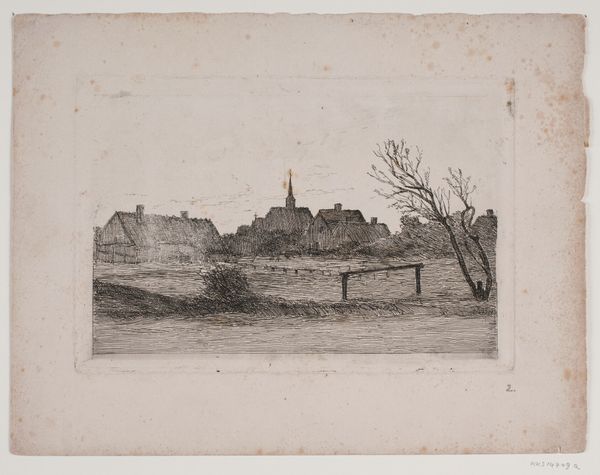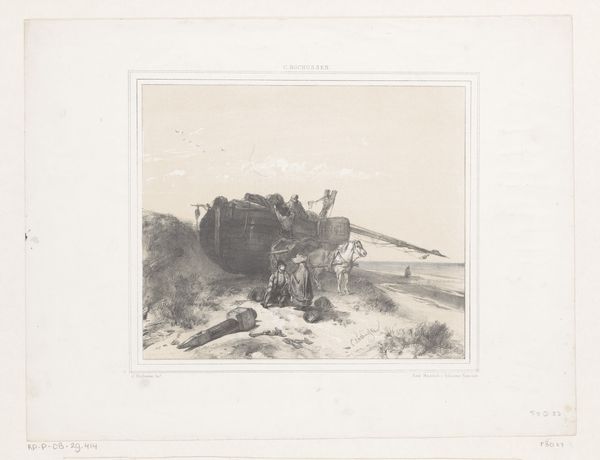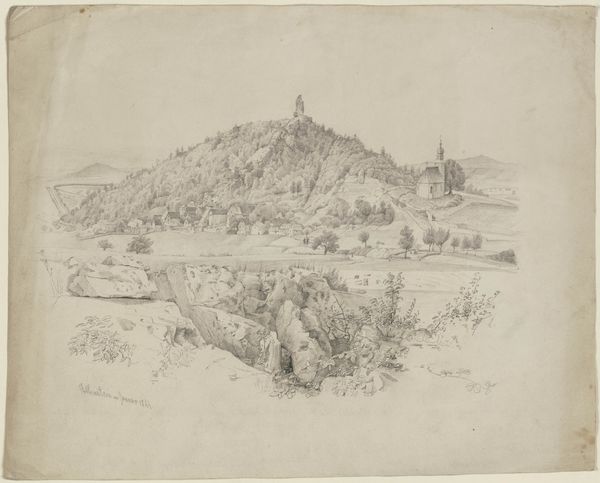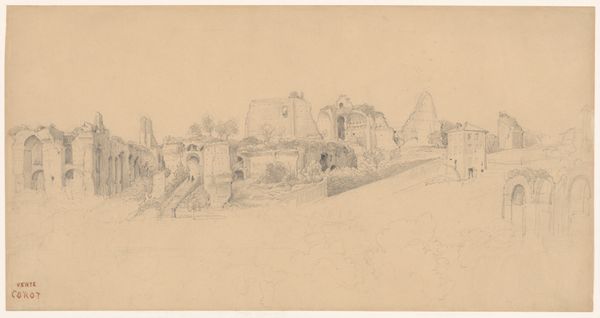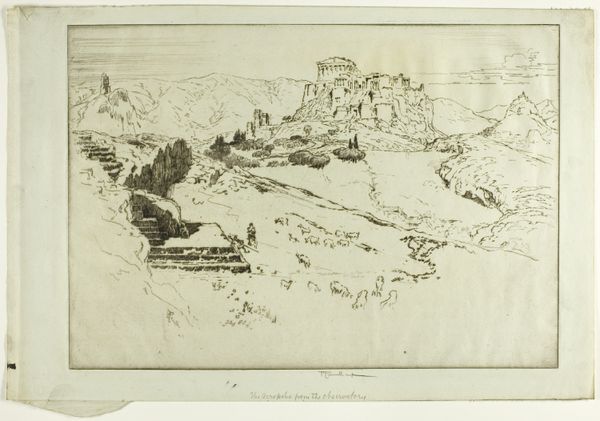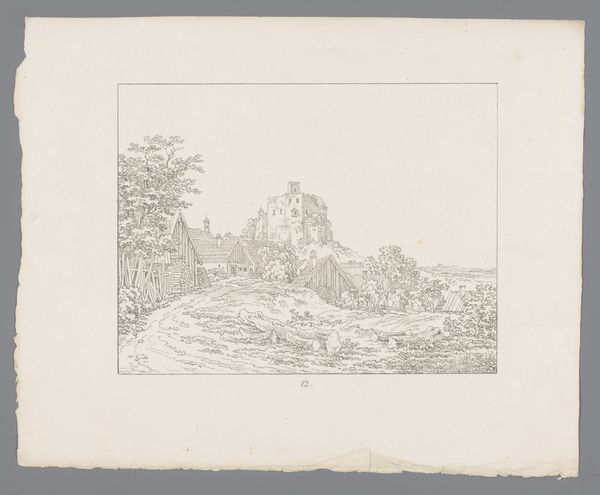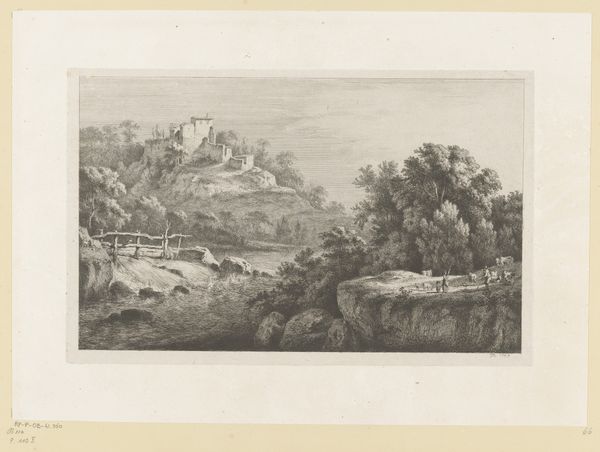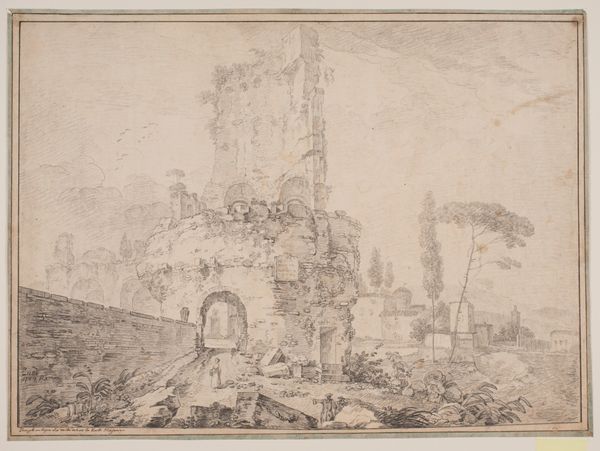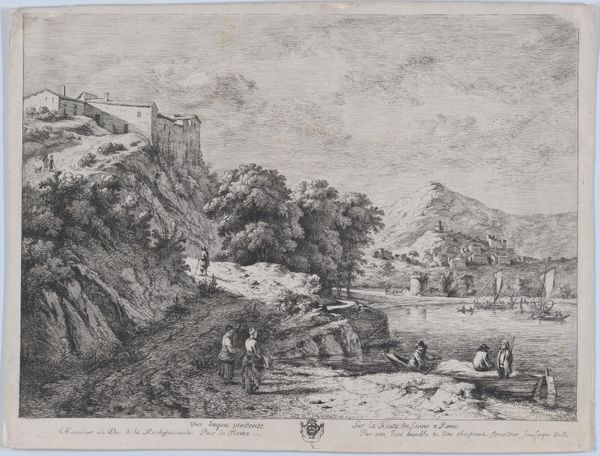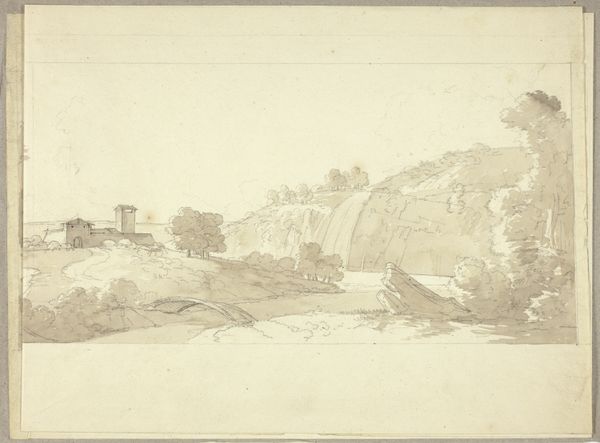
drawing, paper, pencil
#
drawing
#
16_19th-century
#
landscape
#
paper
#
romanticism
#
pencil
Copyright: Public Domain
Curator: Victor Müller, a 19th-century artist, captured this scene in "Dorf und Burg Königstein im Taunus von Norden gesehen," a pencil drawing on paper, presently housed here at the Städel Museum. Editor: It’s such a delicate rendering, isn’t it? The scene appears dreamlike, almost faded, like a memory clinging to the page. The stark whites of the paper contrast with the darker shades that form the shapes of the structures. Curator: The artwork provides a glimpse into a very specific historical context. It's important to recognize that the popularity of landscapes during this period reflects a broader interest in national identity and the idealization of nature. Think about what the Burg, in particular, would have signified during this period. Editor: Absolutely, these images naturalized the dominance of these sites; not simply castles as structures, but their history—of landowners, trade, battles won and lost—all rendered as idyllic scenery to enjoy. There’s something almost propagandistic about it. Curator: It's not uncommon for works of this era to serve specific functions within larger social and political agendas. But Müller does imbue a certain sense of melancholy, achieved through subtle tonal gradations and a soft focus. He skillfully guides our gaze towards the looming Königstein Burg perched atop the village, the composition encouraging a consideration of power. Editor: I wonder, what would it mean to re-evaluate whose perspective art typically speaks for? Even the artist’s framing in this artwork implies a position. How does our appreciation shift when we examine the subjectivities shaping such images, and what untold narratives emerge when we challenge their intended effects? Curator: Those questions encourage crucial re-evaluations of not only this artist's work but also the era in which they produced art and consumed it, revealing a rich field for us to investigate. Editor: It helps make us recognize what other views must be visible, too. This castle may stand here powerfully, but where does that leave everyone else in the community?
Comments
No comments
Be the first to comment and join the conversation on the ultimate creative platform.
